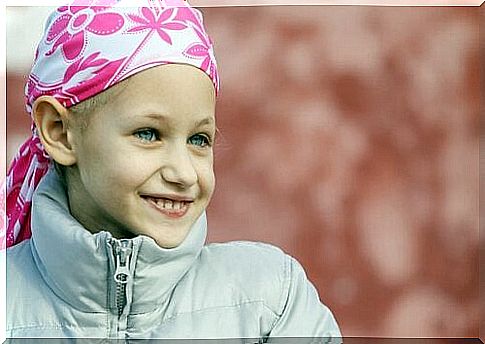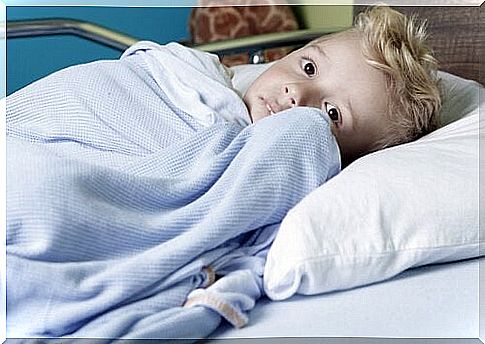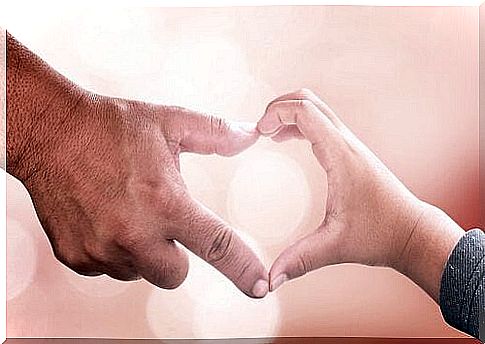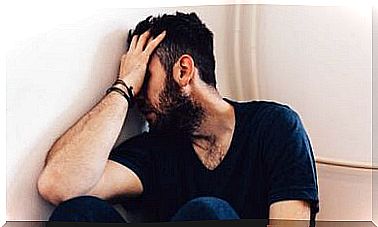Children With Cancer: How We Can Improve Their Quality Of Life

Every year, 900 children under the age of 15 are diagnosed with cancer. Fortunately, our medical advances are increasingly able to provide them with a longer lifespan. However, it is not only important to cure the disease. It is also essential to pay attention to the quality of life of children with cancer.
The consequences of this disease and the treatments needed to cure it must be given the main focus. That is why it is so important to collect the most effective psychological techniques to reduce any suffering. It is also advisable to know the most appropriate interventions to reduce anxiety and depression in children with cancer. We should always strive to improve their quality of life, both during treatment and during the recovery period.
Children with cancer: how does this disease affect them?
Children with cancer have as many physical complaints as psychological complaints. Physical symptoms include vomiting, weight loss, fatigue, etc. On an emotional level, children with cancer experience feelings of anger, fear, or loneliness.
Depending on how old the child is when the family is diagnosed, the disease can manifest itself in different ways. The younger children often worry about the pain they will experience and don’t want to be left without their parents. In older children, feelings of loneliness begin to develop. Teens experience a fear of death and stress associated with the physical changes.

Pain is one of the main concerns of children with cancer. This pain can be caused by the disease itself or occur as a result of medical procedures. For example, bone marrow punctures and biopsies are very painful and require multiple procedures.
Children with cancer, unfortunately, are also exposed to procedures such as radiation therapy, chemotherapy, or blood draw. These are procedures that many often say are more painful than the disease itself. In addition, sleep disturbances, fatigue, anxiety disorders, depression and social problems are also very common.
Psychological intervention in children with cancer
Being told that your child has been diagnosed with cancer has a huge psychological impact on the entire family. The question then arises whether the child should know or not. In these cases, it can be helpful for both the family and the child to talk to an expert about what they can do and how to do it.
The consequences of the disease, the characteristics and progress of treatment, as well as feelings of insecurity often leave parents with all kinds of questions that they want answers to. Psychological intervention can help to find those answers. In any case, it can show the parents how best to deal with the situations that arise.
Below we share a series of treatments that have proven to be very effective several times. To make it easier to understand them, we’ll discuss the main symptoms and how to treat them separately.
- Nausea and vomiting – progressive muscle relaxation through imagery, hypnosis and systematic desensitization.
- Pain – distraction, use of the imagination, breathing and relaxation exercises, positive reinforcement, music therapy or hypnosis.
- Fatigue – distraction and scheduling activities based on priority.
- Anxiety – breathing and relaxation techniques, visualizing pleasurable scenes, reinforcement of appropriate behavior, differential reinforcements, and positive self-aggrandizement.
- Depression – emotional education, engaging in pleasurable activities, and cognitive restructuring.
Adjusting to a new life after beating cancer
The current survival rate for children with cancer is almost 80%. This is hopeful, and through advances in different types of treatments, science is aiming to make it 100% in the future. However, what does it mean to survive something like cancer?
Cancer is a disease characterized by, among other things, long periods of hospitalization. As a result, the youngest patients can no longer go to school, hardly see their classmates or teachers and have minimal contact with the outside world. This makes their social circle very small. It makes it difficult for them to reintegrate into society in various ways .

Back with their classmates
For example, going back to school is a complicated process. Both the children and their parents will be anxious about this. On the one hand, the kids don’t want their parents to leave. However, they may also be concerned about the physical changes (alopecia, amputations, etc.). On the other hand, the parents are afraid that their children will be rejected by their peers. Parents are also concerned that their child may contract illnesses that could endanger his health again.
In these cases, it is wise for both the parents and the child to gather useful information. This also applies to the teachers who are responsible for the situation at school. Having to be part of a class again is an adjustment process that takes time.
Certain interventions have proven to be very effective. For example, talking to school staff to inform them about the illness and treatment, performing preparatory activities to make it easier for the child to return to school, or giving presentations to the rest of the children to help them better understand the child’s illness and needs.
Through psychological help and, last but not least, the multidisciplinary intervention with other professionals, children with cancer and their families can have a better quality of life during this difficult process.









